Construction industry worker, supply shortages impacting commercial, residential projects
A shortage of both workers and building materials continues to plague Florida's construction industry, triggering delays and cost increases involving residential, commercial, and even government projects from Tallahassee to West Palm Beach to Naples.
Those factors are exacerbating the state's existing challenges of housing affordability and availability, according to John Thomas, chief executive officer of the Home Builders and Contractors Association of Florida’s Space Coast.
"As construction costs increase, developers may pass on these expenses to homebuyers or renters, potentially leading to higher housing prices or rental rates," he said. "Moreover, delays in construction projects can further limit the supply of housing, prolonging the imbalance between demand and availability."
Matt Sellick, president of Stock Development's luxury and custom homebuilding division in Naples, is seeing the impacts firsthand at his construction projects in Southwest Florida.
"At the end of the day, it's still a daily struggle," Sellick said. "The labor is just not existing for the demand that is here."
Subcontractors, he said, struggle to get "bodies on job sites."
And, "sometimes, bodies are just not the answer," Sellick added. "They are getting people out there, but then it comes into question: Are they qualified? Are their skills sets there to do it?"
What does the labor shortage mean for the builder and its buyers? A home that used to get built in 12 months could take 15, and one that took 15 months could require 18 to 20, Sellick said.
"If it's more complicated, it can take even longer," he added.
Mike Jaffe, director of operations for the Palm Bay-based East-Central Florida division of Fort Myers-based Christopher Alan Homes, said supply-chain issues, combined with labor shortages, can increase the price of a new home by as much as 20%. That makes what previously was a $300,000 home cost $360,000, and what previously was a $500,000 home cost $600,000.
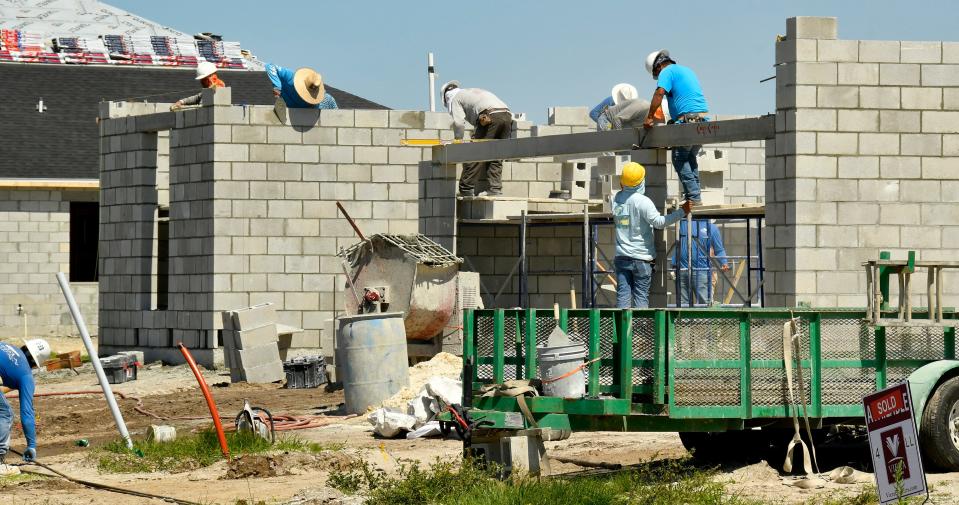
Jaffe ― who also is first vice president of the Home Builders and Contractors Association of Florida’s Space Coast ― agreed with Sellick that some builders are being forced to hire workers who are less skilled and thus, less efficient. That, he said, increases the construction time and price.
Post-COVID, supply chain bottleneck remains an issue
Eva Rey, vice president of community management and communications for The Viera Co., developers of the sprawling Viera planned community in Brevard County, said its subsidiary Viera Builders Inc. has faced both material and staff issues since the COVID-19 pandemic began in 2020. There has been some improvement in both, but not enough to get back to pre-pandemic levels.
"The supply chain and labor markets are moving in the right direction," Rey said. "However, the substantial supply and labor deficiencies caused by the pandemic, paired with higher-than-predicted demand for new homes. created a bottleneck that has not yet been fully worked through. The implications are longer construction times, leading to increased costs for both the builder and end-user."
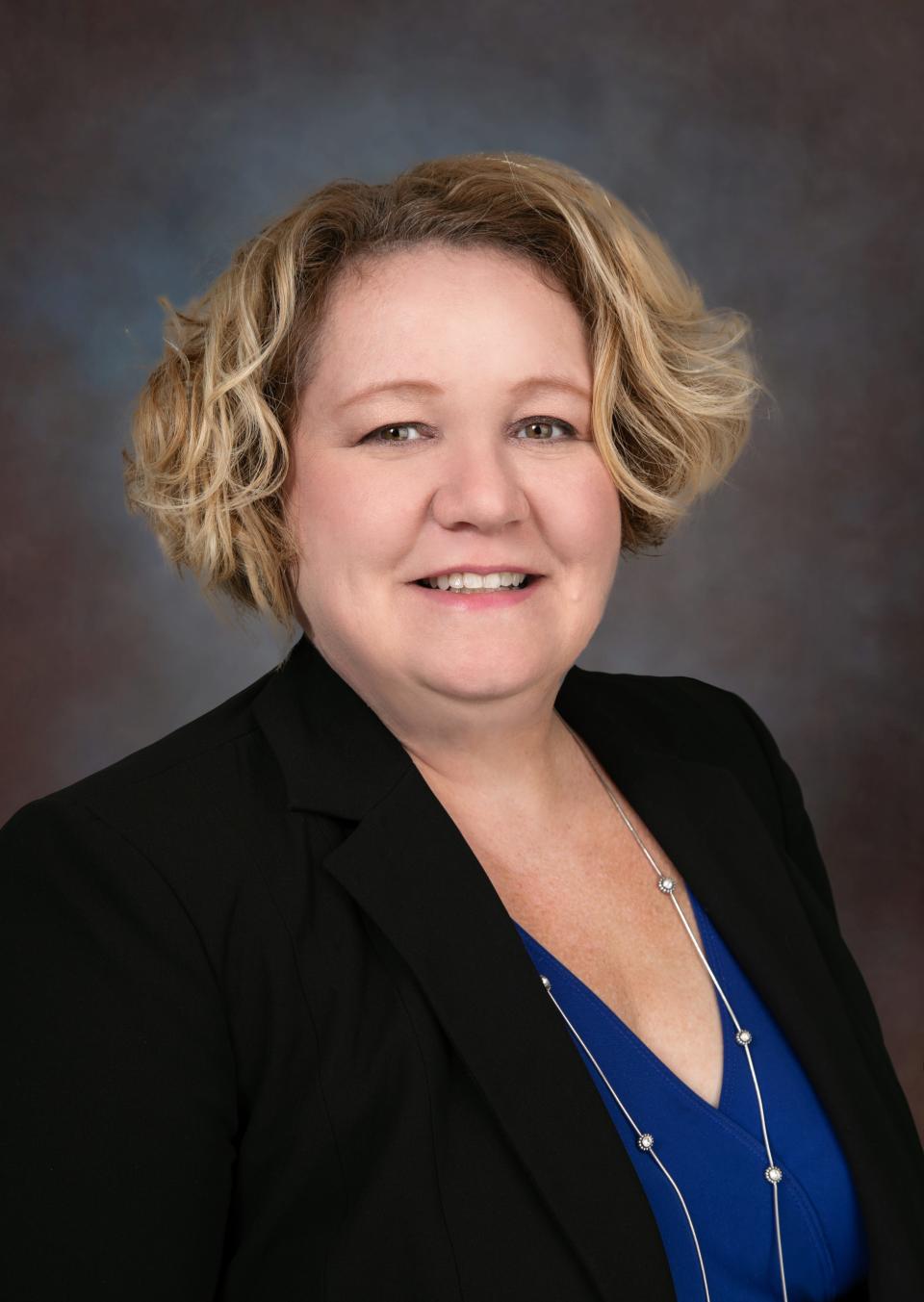
While supply-chain issues stemming from the pandemic initially caused construction disruptions, current challenges are "primarily driven by the high demand, fueled by Florida's explosive growth," Thomas explained.
In many cases, he said, developers or construction companies initially absorb these increased costs. They may face higher expenses because of the need for additional labor or the procurement of more expensive materials to meet the project's demands. These additional costs can impact the profitability of the project ― and potentially lead to delays or adjustments in the construction timeline.
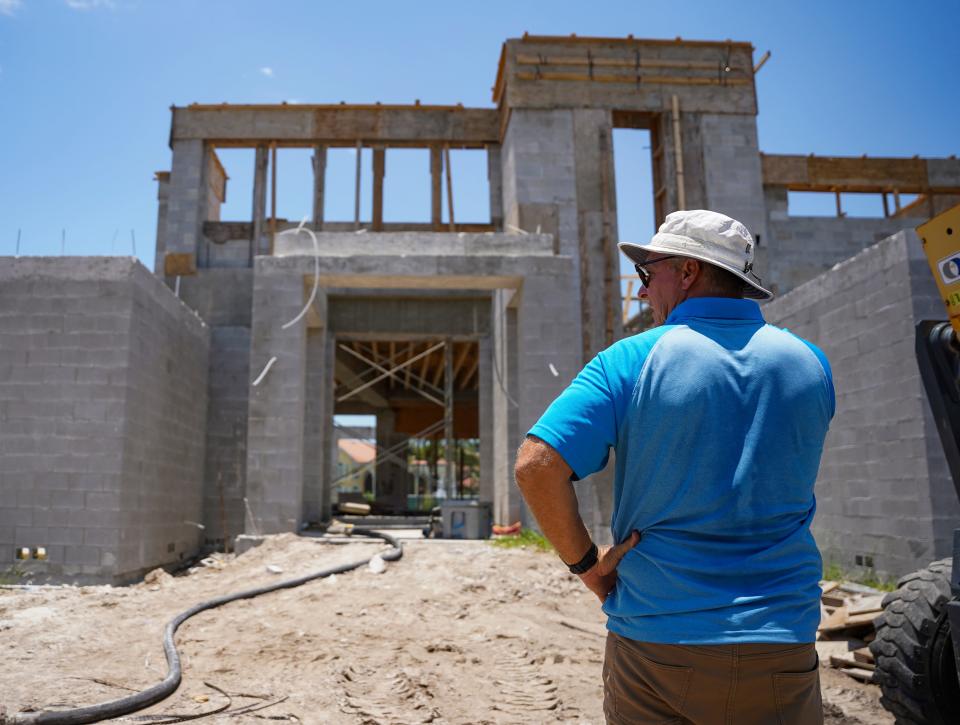
"Ultimately, the expenses associated with labor and materials shortages can ripple through the entire supply chain," Thomas said. "Subcontractors, suppliers and manufacturers may need to pass on their own increased costs to the developers, leading to higher project expenses, which then may be passed on the end users or consumers.”
Depending on the specific project, location and market conditions, the impact on construction costs varies.
"But it is safe to say that the combination of increased demand for construction projects and limited availability of skilled labor and materials has led to cost escalations in various areas across the Florida,” Thomas said.
He said builders can't absorb all the cost increases in labor and supplies without increasing their construction prices, too.
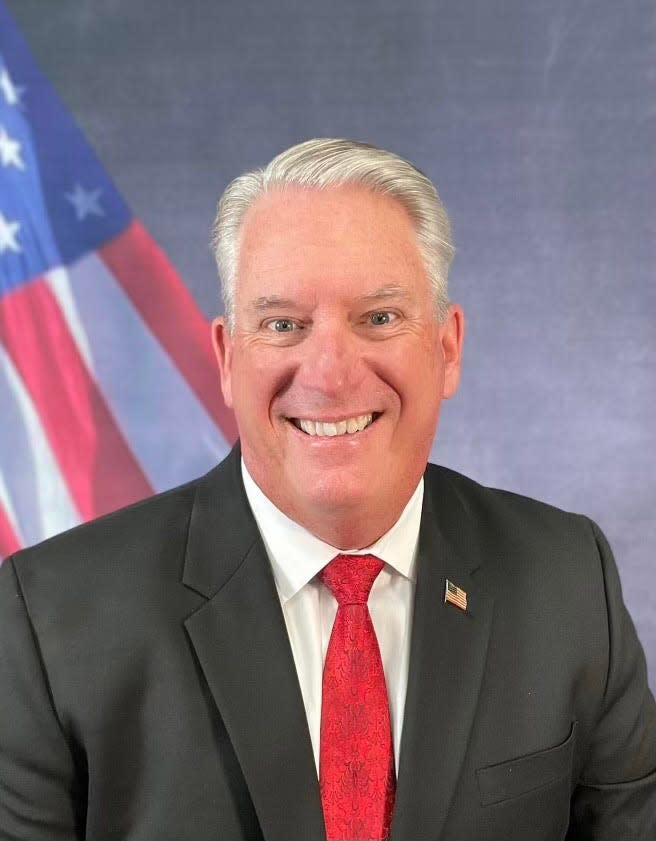
Partly as a result of that, "affordable housing is a huge issue," Thomas said.
And the lack of affordable homes and apartments also hurts the ability of employers to recruit workers in a range of industries ― from law enforcement to health care and from tourism to construction itself.
Why worker shortage exists
A recent survey undertaken by Associated General Contractors shows that, nationally, 91% of construction firms reported difficulty filling positions.
There are multiple reasons for the worker shortage. Contributing factors include an aging workforce, fewer young people pursuing careers in construction and a lack of vocational-training programs.
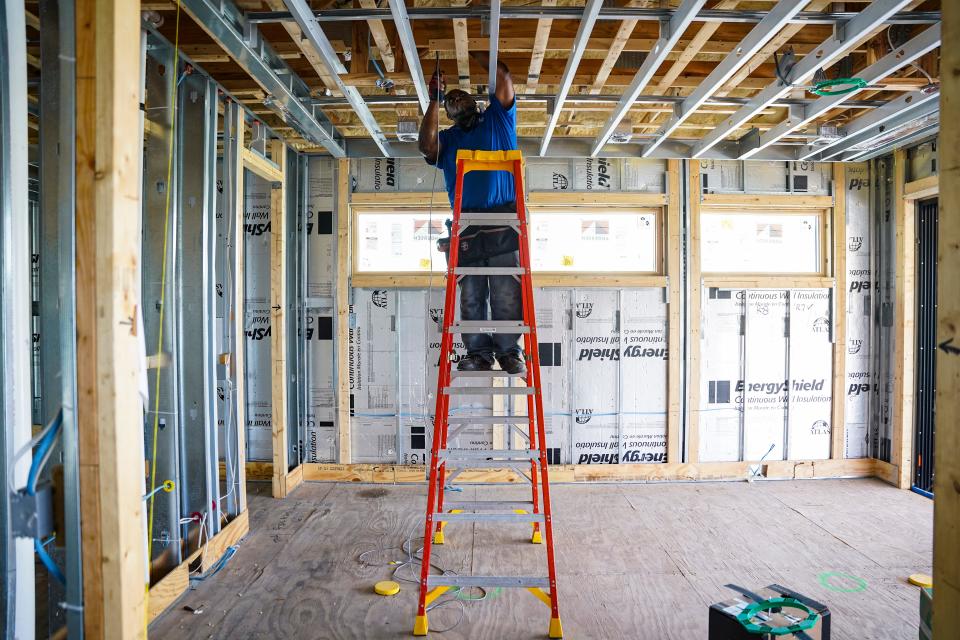
"The surging growth in Florida's real estate development and construction industry has created a high demand for skilled trades, making it challenging to find sufficient manpower today and for construction projects in the future," Thomas said, noting that skilled labor often is hard to come by.
"The construction industry requires individuals with specialized skills, such as carpenters, electricians, plumbers, heating/ventilation/air-conditioning specialists and masons," Thomas said.
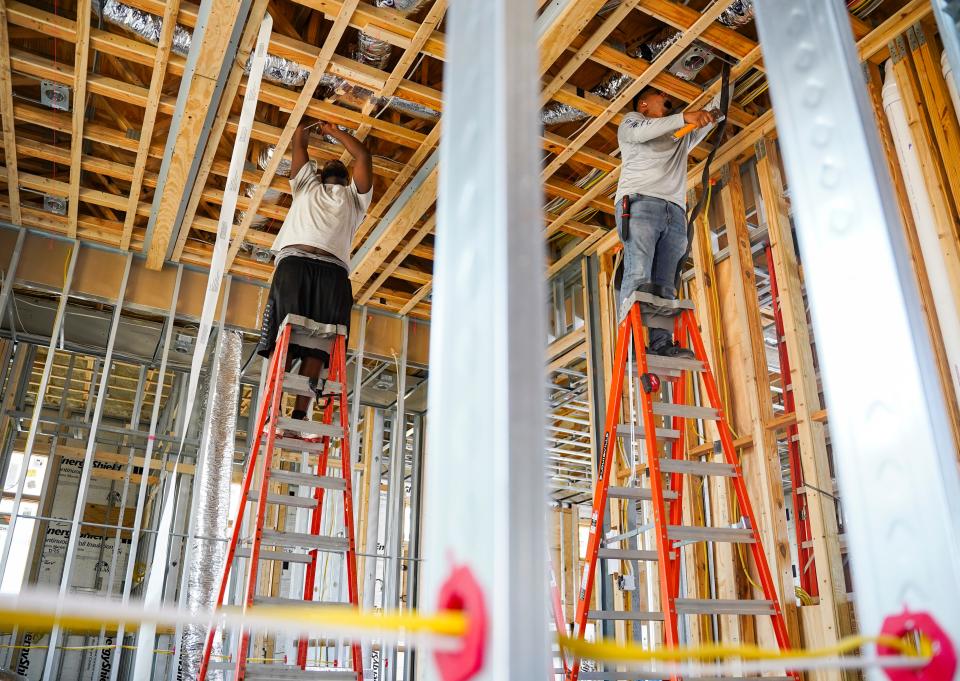
The population growth in Florida has created a higher demand for construction.
Census Bureau data indicates that Florida now is the nation's fastest-growing state, based on percentage increase in population. For example, from July 1, 2021 to July 1, 2022, Florida's population grew by 1.9%, at a blistering pace of 1,142 residents a day.
"More homes, apartments, condos, stores, offices and government buildings are needed to accommodate the growing number of residents," Thomas said. "However, the supply of skilled workers has not kept pace with this demand, leading to labor shortages. It's certainly a cause for concern for the future."
There are challenges in both urban and rural areas of the state.
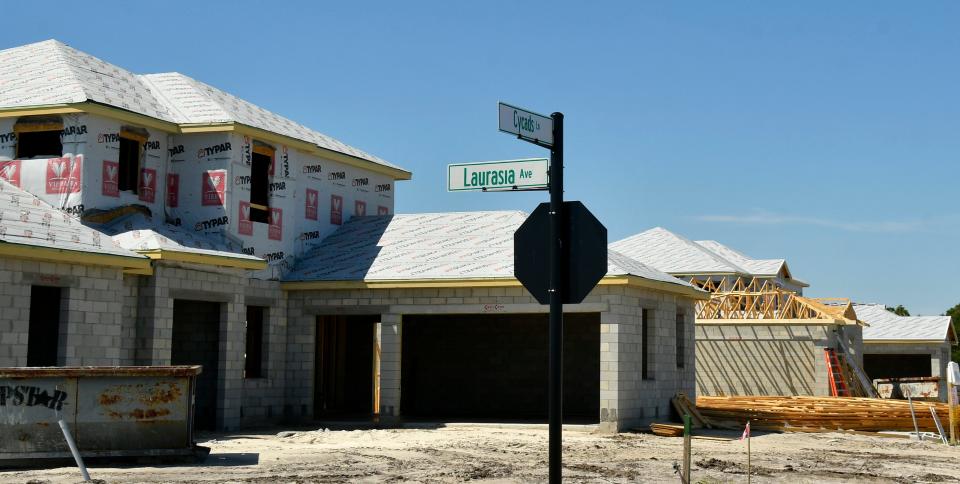
"Certain areas may have a higher concentration of construction activity, putting additional strain on the availability of local labor resources," Thomas said. "In other cases, the remoteness or limited infrastructure in certain regions may discourage workers from relocating or commuting to construction sites."
The ongoing shortage of skilled workers is a challenge, according to Jay Smith, president of Ajax Building Co. in Tallahassee, who has 60 to 70 major projects taking place in Florida and throughout the Southeast. His company plays the role of being a construction manager and general contractor, and builds a team of subcontractors, which includes men and women tasked with putting the work into place.
“For years, we kind of ignored workforce development as an industry and as a country,” Smith said, adding that as a consequence there are many skilled workers in the construction industry in their 60s.
"Now, we're in this boom," he said. "Everyone's feeling the impact. So you see slower delivery of products.”
Hurricane impacts add to strain of labor and supply chain shortages
Recent storms — Hurricanes Michael, Irma and Ian — have contributed to the strain.
"The labor shortage and materials crunch were prevalent even before these hurricanes, driven by various factors associated with population growth ... supply-chain disruptions and increased construction demands," Thomas explained.
"The hurricanes have added to the challenges by increasing the demand for both labor and materials," particularly in areas heavily impacted by the storms, Thomas said.
For example, in Southwest Florida, builders face challenges related to overbooked work crews and extended timelines for constructing new homes.
Hard-hit by Ian, Lee County has seen permit activity surge in the storm's wake, a further indication of how post-hurricane construction work is impacting the industry.
From October to May, Lee County's Community Development Department issued more than 61,000 building permits. The issuance of about 500 permits daily at the end May is about double what the daily rate had been in January, according to Tim Engstrom, a spokesman for the county.
To help meet the increased demand, Community Development has tapped employees from other county departments, brought in professionals from other jurisdictions and hired more temporary workers, he said.
Earlier this year, county commissioners also authorized a midyear budget adjustment so Community Development could add 11 new positions in its permitting section, six building inspectors and five customer-service representatives, Engstrom said.
The town of Fort Myers Beach, ravaged by Ian, has issued roughly 9,200 building permits since October, according to its website. That compares to about 2,000 a year before the hurricane.
Wide-ranging effects on consumers
In some cases, the builder might absorb the increased construction costs.
"However, there could be situations where the increase is borne by the buyer," Rey said. "In particular, the availability of certain custom or upgraded finish and material selections could impact the cost of the increase to the buyer."
From a practical standpoint, she noted "material delays and labor shortages increase build times and costs."
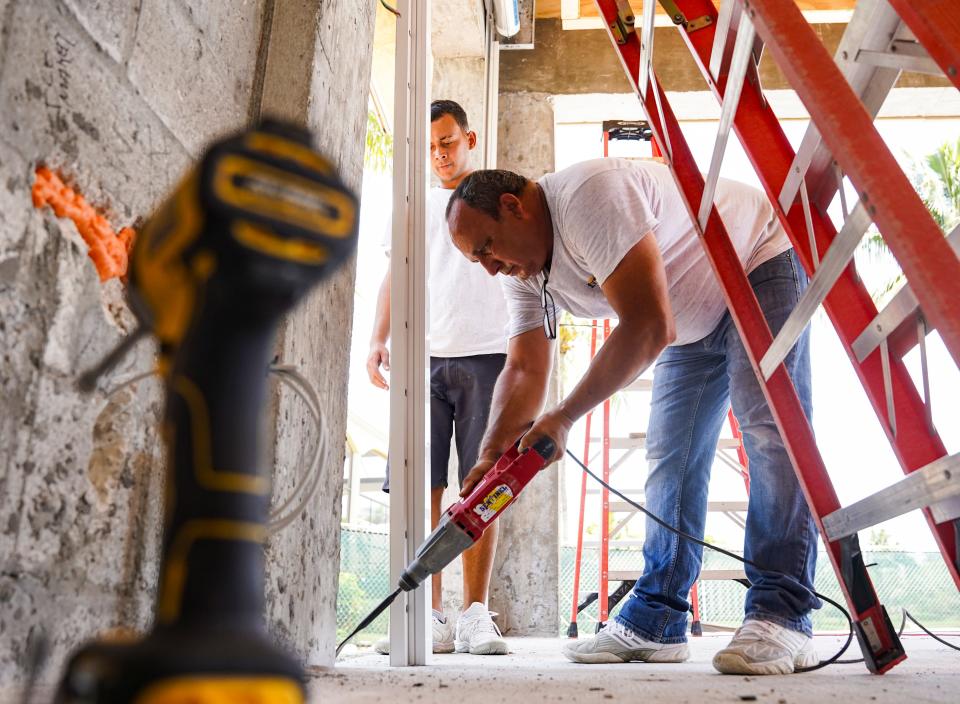
But there are added impacts as well.
"From a customer perspective, these delays can add additional pressure and stress, as they await their new home or commercial business," Rey said. "This can come in the form of the need for longer temporary housing for home buyers or delaying the opening of a business."
Intense recruiting efforts
Tyler Sirois, human resources director for Atlantic Development of Cocoa Inc., an underground utility and site development company, affirmed it is a challenge to find job candidates with the skills his company is seeking.
Among the hard-to-fill jobs: Mechanics, heavy-equipment operators and drivers with a commercial driver's licenses.
Of course, Florida's relatively low 2.6% unemployment rate doesn't help, said Sirois, who also is a member of the state House of Representatives. Florida’s jobless rate has been the lowest among the nation's 10 largest states for 12 months in a row.
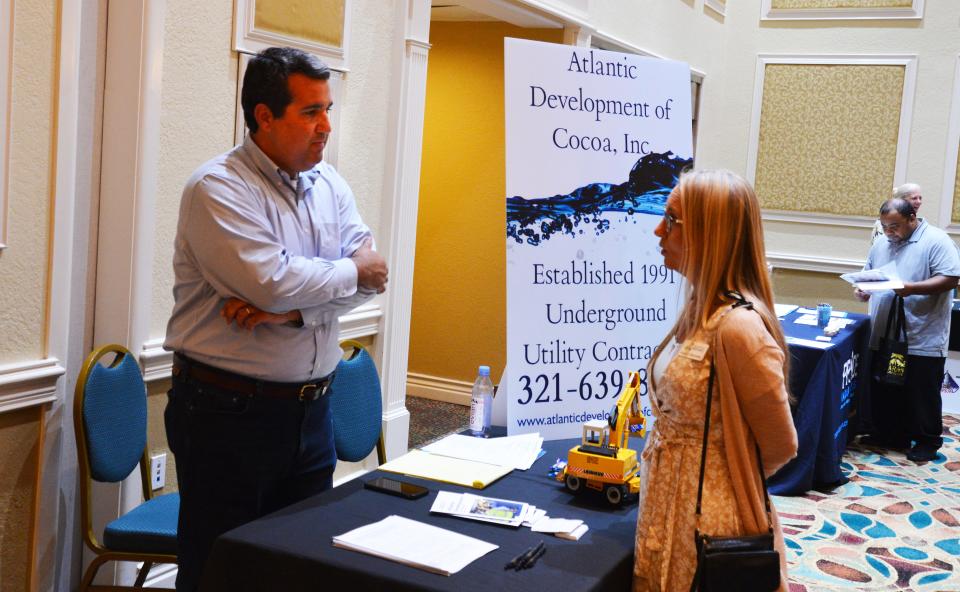
"Finding applicants is a constant effort on our part," Sirois said. "There's no shortage of work to do. The challenge is finding good folks to do it."
Recently, Sirois attended a CareerSource Brevard job fair in Cape Canaveral to meet with potential candidates to join his company, which has a staff of 40. He said the job fair was "a huge opportunity for us," adding that he talked with a number of potential hires at the event. But it's not enough to fill the need.
Melissa Byers, business liaison and apprenticeship navigator for CareerSource Brevard, specializing in the construction and hospitality sectors, said many of the employers she deals with are having difficulty in recruiting.

"We definitely have to ride out this wave," Byers said. "We're kind of seeing it across the board."
One issue, Byers said, is that many baby boomers are retiring, and there are fewer younger workers coming in to take their place.
For some, she said, they don't want to start in a lower-end job and work their way up. For example, in the heating/ventilation/air-conditioning (HVAC) business, they don't want their first job to involve crawling through hot attics before they can get enough experience to be promoted to become a technician.
Immigration law adds to shortage
Exacerbating an already dificult issue is Florida's new immigration law, Senate Bill 1718, which took effect July 1.
Among the provisions of the bill ― which Gov. Ron DeSantis signed in May ― are that private employers with 25 or more employees must use the federal E-Verify system to confirm the employment eligibility of their new employees. The bill broadens penalties for employers who fail to comply with the verification requirements, including the possible suspension and revocation of employer licenses.
It also cracks down on the issuance of identification documents to illegal residents; invalidates out-of-state driver's licenses issued to them; and requires hospitals to collect information ― and send a quarterly report to the Florida Agency for Health Care Administration (AHCA) ― on health care costs for them.
The law could make matters even worse for subcontractors, who could lose workers as a result, said Sellick, with Stock Development.
"Time will tell," he said. "There is definitely concern with that."
Any direct impact likely would be on subcontractors, rather than builders or general contractors, because workers on subcontractor crews more frequently switch from company to company, Thomas reasoned. He cited air-conditioning installers, drywallers, painters and roofers as examples.
Manuel Lievano, chief executive officer of Miami-based MCC USA Global Workforce Solutions, said many construction workers without immigration status have been leaving Florida, fearing the new law. The result is an even more severe worker shortage for the industry.
"They're struggling to find workers" in construction, said Lievano, whose firm connects U.S. companies experiencing labor shortages with foreign workers who want to obtain permanent residency in the United States. "They are having such a hard time."
As a result, he said, the cost of construction projects "is going through the roof."
"It's simply supply and demand," Lievano said.
Material costs and shortages
Michelle DePotter, chief executive officer of the Florida East Coast Chapter of Associated General Contractors, said the cost of concrete has significantly increased and that electrical switch gears can take as long as six months to acquire.
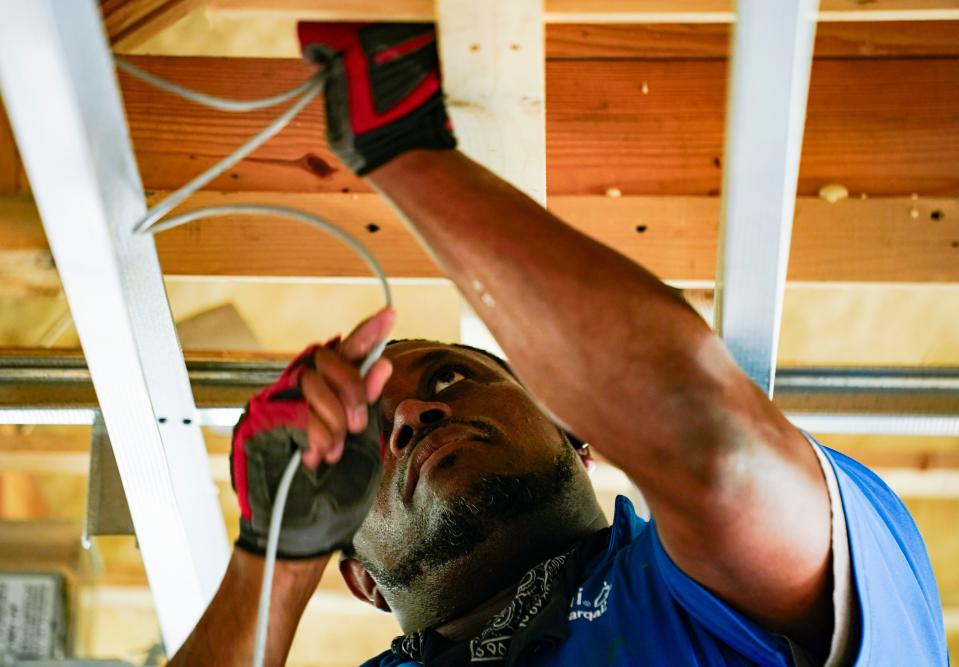
“These issues affect both private- and public-sector work,” she said.
In the residential sector, "throughout the pandemic, supply-chain disruptions would, daily, necessitate product substitutions for Viera Builders and our customers," Rey said.
"While supply-chain issues have greatly improved in the past six months, we are not yet back to pre-pandemic levels of product availability," she said. "Although not as dire as a few months ago, builders are still dealing with backordered and discontinued items, causing material delays."
She added: "Most of our substitutions are related to products being discontinued from manufacturers, not delays in manufacturing or shipping. Currently, our most deficient materials are appliances, countertops, flooring and high-efficiency HVAC equipment."
Certain homebuilding products can take several weeks to come in, such as windows or cabinets, Rey said.
"The availability of specific long-lead products also changes unexpectedly," she said. "As an example, we experienced a shortage on garage doors, and had to install different, temporary doors until those arrived. The cause of the shortage was unknown.
Viera Builders continues to seek out new vendors to meet market demands.
It also monitors the market to try to anticipate shortages, so it can get ahead of them as much as possible by working closely with its materials management and purchasing teams.
"When windows were experiencing delays, we put processes in place to order these items at the start of construction," Rey said. "We have also increased our inventory of products with volatile availability, so that we can more efficiently meet demand when they are needed."
Others agree supply-chain issues have eased noticeably this year.
"All in all, the materials have gotten better," Stock Development's Sellick said. "You kind of go in spurts."
The key is to manage buyers' expectations by explaining how long construction could take from Day 1, so they're not surprised or disappointed, Sellick said.
Looking for possible solutions? Start in the public schools
To help ease the construction cost crunch, some builders, like Suffolk Construction Co., are trying high-tech approaches.
"Construction has historically been averse to technology and innovation because few builders have the capital to invest significantly in research and development, and many are not convinced there is a return on that investment, even as building designs have become more sophisticated than ever," Suffolk Florida Gulf Coast President Pete Tuffo said, adding that the company is employing "some of the most advanced tech tools in the industry, including virtual reality and modeling technologies, artificial intelligence, robotics and data."
Thomas offered up other potential solutions to cope with increased construction costs in Florida:
Working together to find cost-saving opportunities through bulk purchasing, so-called "value engineering" of project design and long-term supply agreements.
Streamlining permitting processes to reduce administrative burdens and delays, saving time and costs.
Offering local government incentives ― such as tax breaks, grants and reduced impact fees ― to offset construction costs.
One big need to help ease the construction staffing shortage is working with public schools, nonprofits and others to focus on attracting and training new talent.
"Fewer and fewer people are choosing a skilled job as a career option," Rey said. "In order to address this situation, many leaders within the construction industry are working within their communities and school system to provide educational and training opportunities to those entering the job market in order to bridge the gap in staffing our trades."
In the Brevard School District, four high schools are offering building construction trade programs and one has a program specifically targeted for training in the heating and air-conditioning industry.
Total enrollment in these programs was about 600 in the 2022-23 school year. The program will expand in the next year, as a carpentry program is scheduled to start at another high school.
The district also has introductory construction-related programs at some of its middle schools.
Rachel Rutledge, the Brevard School District's director of career and technical education, said the district works closely with its construction-industry business partners to design the program to meet the needs of students and potential future employers.
"We try to match the course with the need, to prepare students for their futures," Rutledge said. "They are well-equipped coming out of the program."
Hiring more women, vocational rehabilitation and retraining potential employees who are leaving the military or looking for a career change is another potential opportunity for workforce development, Rey said.
It is crucial to get more people interested in the construction industry.
"The way that our state is booming, we have a major shortage," of workers, Rutledge said.
And, she said, if things don't change, "the gap will continue to get larger."
Mike Diamond, who covers Palm Beach County government and transportation for The Palm Beach Post, and TaMaryn Waters, who covers business and economic development for the Tallahassee Democrat, contributed to this story.
Dave Berman is business editor at FLORIDA TODAY. Contact Berman at dberman@floridatoday.com, on Twitter at @bydaveberman and on Facebook at www.facebook.com/dave.berman.54.
Laura Layden is senior business reporter at the Naples Daily News. Contact Layden at Laura.Layden@NaplesNews.com.
This article originally appeared on Florida Today: How construction staff, supply shortage are hitting Florida consumers
